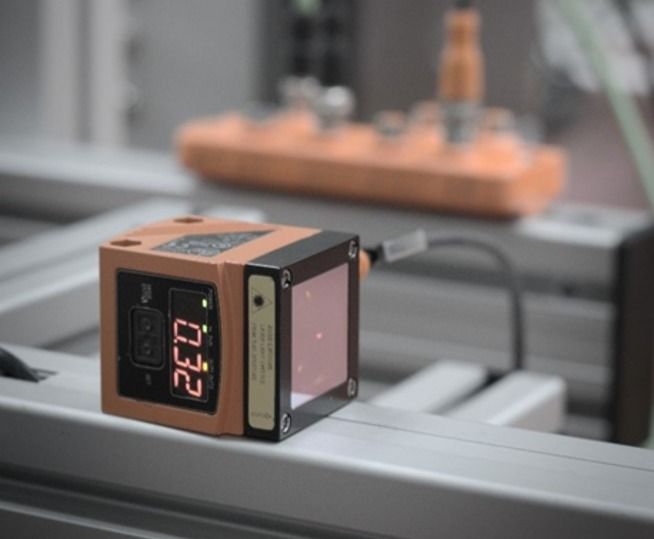This is the multi-page printable view of this section. Click here to print.
Other Tools
1 - Retrofitting with ifm IO-link master and sensorconnect
Retrofitting older machines with sensors is sometimes the only-way to capture process-relevant information. In this article, we will focus on retrofitting with ifm IO-Link master and Sensorconnect, a microservice of the United Manufacturing Hub, that finds and reads out ifm IO-Link masters in the network and pushes sensor data to MQTT/Kafka for further processing.
When should I use it?
Retrofitting with ifm IO-Link master such as the AL1350 and using Sensorconnect is ideal when dealing with older machines that are not equipped with any connectable hardware to read relevant information out of the machine itself. By placing sensors on the machine and connecting them with IO-Link master, required information can be gathered for valuable insights. Sensorconnect helps to easily connect to all sensors correctly and properly capture the large amount of sensor data provided.
What can I do with it?
With ifm IO-Link master and Sensorconnect, you can collect data from sensors and make it accessible for further use. Sensorconnect offers:
- Automatic detection of ifm IO-Link masters in the network.
- Identification of IO-Link and alternative digital or analog sensors connected to the master using converter such as the DP2200. Digital Sensors employ a voltage range from 10 to 30V DC, producing binary outputs of true or false. In contrast, analog sensors operate at 24V DC, with a current range spanning from 4 to 20 mA. Utilizing the appropriate converter, analog outputs can be effectively transformed into digital signals.
- Constant polling of data from the detected sensors.
- Interpreting the received data based on a sensor database containing thousands of entries.
- Sending data in JSON format to MQTT and Kafka for further data processing.
How can I use it?
To use ifm IO-link gateways and Sensorconnect please follow these instructions:
- Ensure all IO-Link gateways are in the same network or accessible from your instance of the United Manufacturing Hub.
- Retrofit the machines by connecting the desired sensors and establish a connection with ifm IO-Link gateways.
- Deploy the sensorconnect feature and configure the Sensorconnect IP-range to either match the IP address using subnet notation /32, or, in cases involving multiple masters, configure it to scan an entire range, for example /24. To deploy the feature and change the value, execute the following command with your IP range:
sudo $(which helm) upgrade --kubeconfig /etc/rancher/k3s/k3s.yaml -n united-manufacturing-hub united-manufacturing-hub united-manufacturing-hub/united-manufacturing-hub --set _000_commonConfig.datasources.sensorconnect.enabled=true,_000_commonConfig.datasources.sensorconnect.iprange=<ip-range> --reuse-values --version $(sudo $(which helm) ls --kubeconfig /etc/rancher/k3s/k3s.yaml -n united-manufacturing-hub -o json | jq -r '.[0].app_version') - Once completed, the data should be available in your Unified Namespace.
What are the limitations?
- The current ifm firmware has a software bug, that will cause the IO-Link master to crash if it receives to many requests. To resolve this issue, you can either request an experimental firmware, which is available exclusively from ifm, or re-connect the power to the IO-Link gateway.
Where to get more information?
2 - Retrofitting with USB barcodereader
The barcodereader microservice enables the processing of barcodes from USB-linked scanner devices, subsequently publishing the acquired data to the Unified Namespace.
When should I use it?
When you need to connect a barcode reader or any other USB devices acting as a keyboard (HID). These cases could be to scan an order at the production machine from the accompanying order sheet. Or To scan material for inventory and track and trace.
What can I do with it?
You can connect USB devices acting as a keyboard to the Unified Namespace. It will record all inputs and send it out once a return / enter character has been detected. A lof of barcode scanners work that way. Additionally, you can also connect something like a quality testing station (we once connected a Mitutoyo quality testing station).
How can I use it?
To use the microservice barcode reader, you will need configure the helm-chart and enable it.
- Enable the barcodereader feature by executing the following command:
sudo $(which helm) upgrade --kubeconfig /etc/rancher/k3s/k3s.yaml -n united-manufacturing-hub united-manufacturing-hub united-manufacturing-hub/united-manufacturing-hub --set _000_commonConfig.datasources.barcodereader.enabled=true --reuse-values --version $(sudo $(which helm) ls --kubeconfig /etc/rancher/k3s/k3s.yaml -n united-manufacturing-hub -o json | jq -r '.[0].app_version') - During startup, it will show all connected USB devices. Remember yours and then change the
INPUT_DEVICE_NAMEandINPUT_DEVICE_PATH. Also setASSET_ID,CUSTOMER_ID, etc. as this will then send it into the topicia/ASSET_ID/.../barcode. You can change these values of the helm chart usinghelm upgrade. You find the list of parameters here. The following command should be executed, for example:sudo $(which helm) upgrade --kubeconfig /etc/rancher/k3s/k3s.yaml -n united-manufacturing-hub united-manufacturing-hub united-manufacturing-hub/united-manufacturing-hub --set _000_commonConfig.datasources.barcodereader.USBDeviceName=<input-device-name>,_000_commonConfig.datasources.barcodereader.USBDevicePath=<input-device-path>,_000_commonConfig.datasources.barcodereader.machineID=<asset-id>,_000_commonConfig.datasources.barcodereader.customerID=<customer-id> --reuse-values --version $(sudo $(which helm) ls --kubeconfig /etc/rancher/k3s/k3s.yaml -n united-manufacturing-hub -o json | jq -r '.[0].app_version') - Scan a device, and it will be written into the topic
ia/ASSET_ID/.../barcode.
Once installed, you can configure the microservice by setting the needed environment variables. The program will continuously scan for barcodes using the device and publish the data to the Kafka topic.
What are the limitations?
- Sometimes special characters are not parsed correctly. They need to be adjusted afterward in the Unified Namespace.
Where to get more information?
- You can get more information in the technical documentation of barcodereader
- Our helm chart reference provides lists of configuration parameters.
